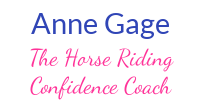At a recent clinic, one of the participants wanted help teaching her mare to go forward willingly when she was being ridden. The woman described her mare as being sweet, but "lazy and stubborn". The mare had been a broodmare until the woman bought her and had only recently been started under saddle.
When resolving issues that come up under saddle, I like to take a look at how the horse responds to groundwork. Typically, the types of behaviours that show up on the ground will be the same as the ones that show up when the horse is being ridden.
The behaviours can be addressed from the ground first. For example, a horse that is pushy with her shoulders on the ground will be pushy with her shoulders when ridden. Stress or resistance to contact on the bit can be identified, diagnosed and resolved through in-hand work and lunging. So, that's where we started - leading in hand and then lunging.
The mare seemed quite willing and easy to work with. She had a gorgeous walk and trot on the lunge and went forward quite willingly. The owner was pleased with the groundwork, but was not convinced this would transfer to the work in the saddle.
I got on the mare and almost immediately saw the problem ... saddle fit.
The western saddle was far too narrow for the mare! So the front of the tree was pushing down into the top of her shoulders.
No wonder the mare didn't want to go forward!
I dismounted and asked the owner to put her hand between the horse's shoulder and the front of the saddle (where the conches are just below the pommel). She felt how snug the fit was on her fingers. Then I picked up the mare's front leg and drew it forward. The owner exclaimed, "Ow! That hurts!"
The top of the horse's shoulder rotates toward the saddle whenever she takes a step forward. When the saddle sits too far forward or is too tight, that bone gets jammed up by the saddle tree resulting in pain.
As I told the owner... this mare was not stubborn. In fact, she is an amazing mare.
Many horses would have had much stronger reactions to that pain - bolting, bucking or rearing.
All this wonderful mare did was say "it hurts to go forward, so I am not going forward - no matter how much pressure you apply".
Riders and trainers are often quick to "label" the horse's behaviours in human terms - stubborn, lazy, ignorant, or just plain bad. But, the only way the horse can communicate is through her behaviour.
Behaviour is communication.
Sometimes, it can be challenging to figure out what is really causing the behaviour. But none the less, in order to change the behaviour, we have to remove the cause.
There are several reasons that your horse might be unwilling to go forward:
- poor saddle fit
- sore muscles, joints or feet
- chiropractic misalignment
- rider's position or tension
- conflicting aids/cue
Before blaming your horse for her "bad" behaviour, check for a physical cause and eliminate it. A poorly fitting saddle will result in sore muscles and possibly chiropractic issues. Eliminate the cause of the pain and, in most cases, you eliminate the resistance.
There are lots of resources available on the internet and in books about how to properly fit a saddle.
Schleese Saddlery has a great series of online tutorials about saddle fit that I highly recommend.
A couple of excellent books on fitting English and Western saddles are:
1) The Western Horse's Pain-Free Back and Saddle-Fit Book: Soundness and Comfort with Back Analysis and Correct Use of Saddles and Pads by Joyce Harmon DVM
2) The Horse's Pain-Free Back and Saddle-Fit Book by Joyce Harmon DVM
3) Recognizing the Horse in Pain and What You Can Do About It! by Dr. Joanna L. Robson DVM

